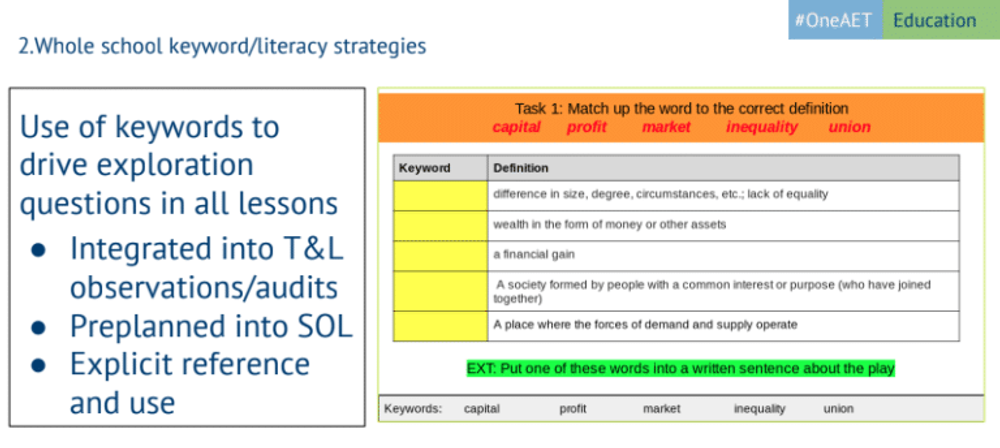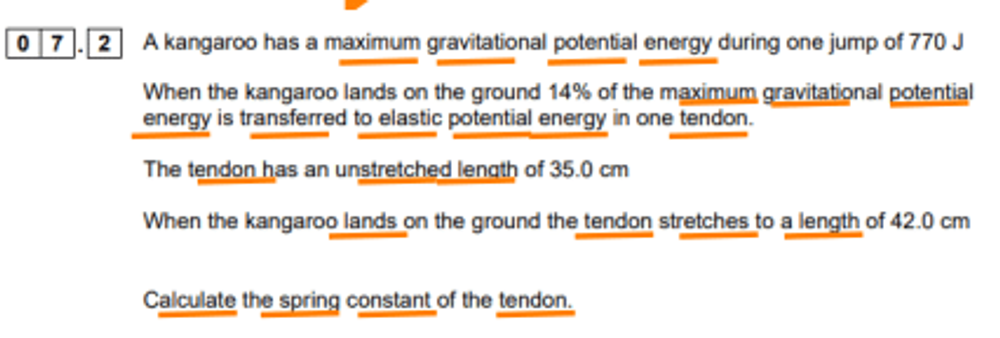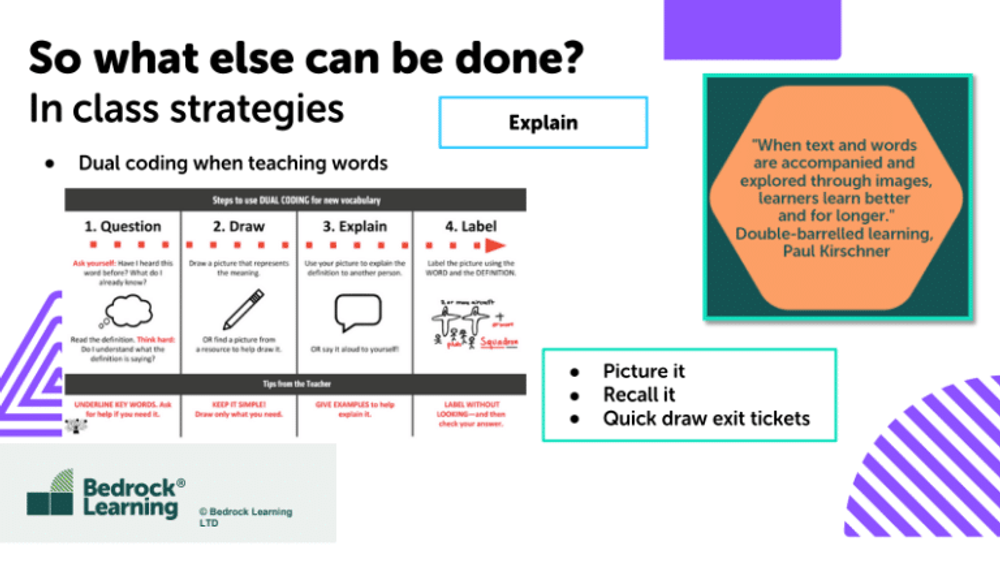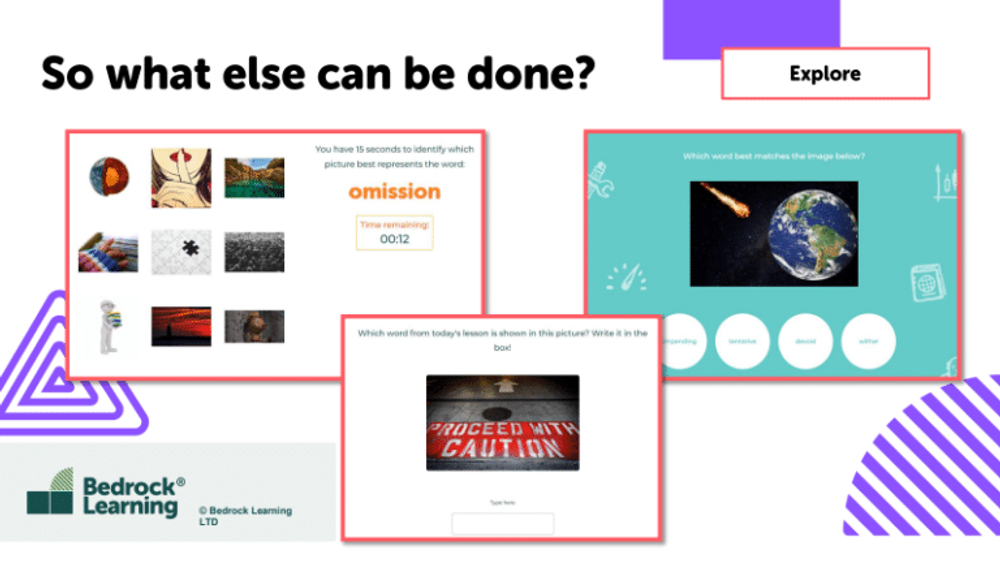Miss Ashton reflects
What better way to kick off a new month than with a webinar on targeted language instruction?
Joined by Assistant Principal Rich Hill from Bexleyheath Academy, my webinar on the 1st March 2022 compiled research and strategies around the following questions:
- What is targeted vocabulary instruction?
- So what do other schools do to tackle this in every subject?
- Now, what next steps can we take to target our vocabulary instruction further?
Why should you care about explicit vocabulary instruction?
Targeted vocabulary instruction is more than just learning word definitions – it involves teaching learners the language they need to navigate life, not just the classroom.
The 2021-22 Oxford Language Report delves into the various reasons learners need targeted vocabulary instruction to navigate their whole lives, not just academia:
- Communicating their emotions rather than expressing them through bad behaviour
- Alerting others when they need help, rather than attracting attention through other means
- Connecting with other learners when playing creatively and thinking imaginatively
- Developing self-confidence in their abilities
By the time learners leave secondary school, they need to have 15-20,000 unique words in their vocabulary arsenal (Treffers-Daller 2013) – and this is not just to succeed in their GCSEs, difficult as they are, but to thrive throughout their adult lives!
The work you do to target vocabulary instruction for your learners sets them up for success.
Language for life
Rich Hill of Bexleyheath Academy made a great point about utilising targeted vocabulary instruction to improve learners’ cultural capital.

While these are all Tier 2 words, the common feature between them is that they not only unlock literacy in the classroom, but financial literacy for a learner’s whole life. Without deep, contextual knowledge of these terms, necessary areas of adult life remain locked.
And this isn’t the only area unlocked by targeted vocabulary instruction; below, I delved into the Flesch Kincaid score of a GCSE exam question:

Though this exam paper was not for English, the Flesch Kincaid score of the question came to 38.71 out of 100 – this is a similar score to Nietzsche’s “Beyond Good and Evil” (not the easiest book in the world!), and has a relative reading age of over 16 years old. To put this into perspective, around a third of all GCSE-age learners have a reading age of 12 years or under.
Without words, misconceptions arise. There is no denying that a learner’s GCSE results have an impact on their success throughout their lives – so without targeted vocabulary instructions, how are learners able to succeed? If a learner is talented at chemistry but struggles to access the language of their exam paper, how are they able to demonstrate their ability?
As well as this, learners need a strong foundation of literacy and vocabulary to be able to code-switch through academia. For example, the vocabulary learners use when communicating with their peers is far different from the language written in an exam paper – learners need a strong grasp on both to crack the academic code.

This concept of cracking the academic code in every subject relates to my previous webinar on disciplinary literacy, which explores this language gap further.
All strategies around targeted vocabulary instruction are linked to Isabel Beck’s theory of the 3 tiers of vocabulary.
In order to target vocabulary instruction, teachers must identify the necessary Tier 2 and Tier 3 language learners need to succeed.


Targeted vocabulary instruction with Bedrock
Introduce learners to new vocabulary in contextualised and multi-modal activities.
3 ways to select your vocabulary strategically:
1. Inspiration can be taken from Coxhead’s 570 necessary academic terms, most of which are taught in Bedrock Vocabulary.
2. Extra emphasis should be placed on terms that have different meanings in different disciplines, such as “evaluate”, to achieve subject-specific understanding.
3. These terms can also be picked out through subject-specific relevance, such as their appearance in a certain classroom lesson.
After new vocabulary has been selected, it should be explained, explored and consolidated.
Step 1. Explain
- Say the word
- Write the word
- Give an accessible definition
- Ask for examples of the word in use

Step 2. Explore
- Link the word to similar terms
- Relate the word to contextual images
- Compare the word to synonyms and antonyms
- Use diagrams, such as Frayer models and knowledge organisers
- Utilise word games and activities, such as those in Bedrock Vocabulary

Step 3. Consolidate
- Learners need at least 5 comprehensible exposures to a word in order to understand it
- Present learners with repeated exposure to new terms
- Foster high-quality teacher-student conversations and enhance learners’ responses
- Develop a culture of reading through strategies such as read-alouds and discussion sessions (recommended by Cunningham and Stanovich, 1998)

Together, these steps form Alex Quigley’s SEEC model (Closing the Language Gap). For more information on how you can implement the SEEC model, find the full webinar on our YouTube channel.
How are these targeted vocabulary instruction strategies used at Bexleyheath Academy?
Assistant Principal Rich Hill showed us some great examples of these strategies in action.
Since joining the school and implementing a focus on targeted vocabulary instruction, Rich has brought the school from ‘special measures’ to ‘good’. In fact, their utilisation of literacy strategies to improve learners’ reading age was so effective they had to retest to ensure their results weren’t faulty – but learners really had made an average of one whole year of progress on their reading age! This goes to show the massive difference targeted vocabulary instruction makes, not just in English but in every subject.
They achieved this result by utilising whole-school keyword focuses and crafting a culture of reading through their use of Bedrock for 60 minutes per week, and their unique, culturally enriching strategy of embedding vocabulary in “remarkable people”.
What next steps could you take to target vocabulary instruction?
The first and most important step we can all take to improve literacy at our schools is to identify and select the Tier 2 and Tier 3 vocabulary they need, both for their subjects at school and for their whole lives – Bedrock Mapper is a great tool to speed up this process!
As well as this, we can learn from Rich Hill’s recommendation that you should promote literacy CPD in your school. Not only does this increase buy-in from fellow teachers to support whole-school vocabulary instruction, but it reinforces the concept that language is the foundation of life, not just for literacy. Every teacher has a role in preparing learners for the world beyond school, and this means reinforcing their knowledge with targeted vocabulary instruction in every subject.
From this point, you can go further down the in-class strategies mentioned, such as Alex Quigley’s SEEC strategy and Kathrine Mortimore’s strategies from our webinar’s recommended reading.
What did we find out about attitudes towards targeted vocabulary instruction?
I share polls with attendees throughout the webinar to gauge understanding of the topic being discussed. This webinar began with over half of all attendees lacking confidence in their understanding of targeted vocabulary instruction.
At the end, a whopping 100% of participants who answered the poll felt significantly more confident – including me!
Final takeaways
The four peas of vocabulary
Breaking down the SEEC strategy into its smallest form, I came up with the 4 peas of vocabulary (seen smiling on the left):
- Plan the vocabulary that needs to be taught.
- Pre-teach these chosen words and phrases.
- Provide direct instruction in this new vocabulary, such as repeat exposures to the word in various contexts, eg. reading, writing, oracy.
- Provide opportunities for learners to read widely and thoroughly, exposing them to more and more important vocabulary.
I am glad that, despite technical difficulties, we managed to get Rich Hill onto the webinar to share the strategies Bexleyheath Academy uses because they were incredibly insightful.
This webinar really reminded me that targeted vocabulary instruction, disciplinary literacy and language for life are all tightly interlinked with one another; by improving a learner’s vocabulary, you unlock the world around them.
Language is the foundation (or might I say the Bedrock!) of all learning, both in school and in the wider world; it’s important to target this in every subject.





